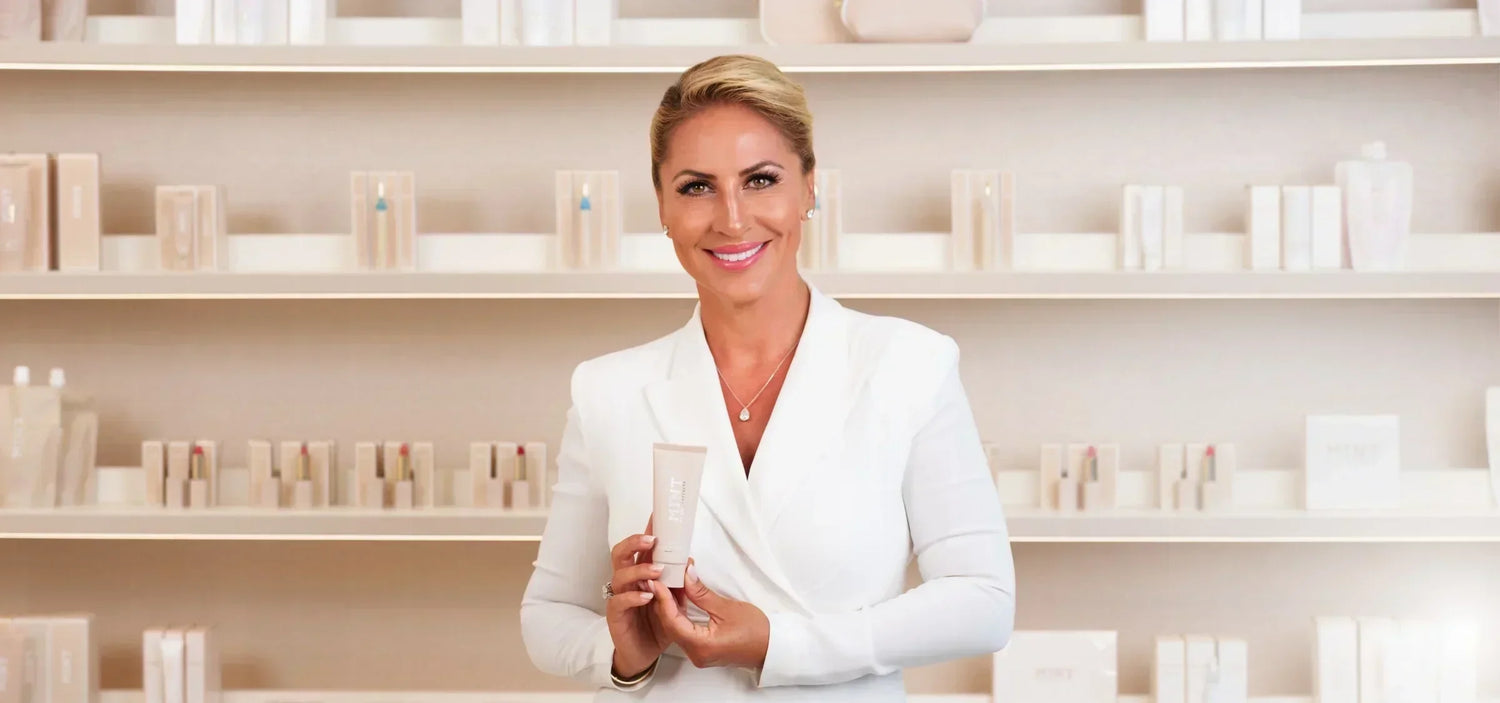Did you know that our oral mucosa is permeable to many ingredients? This principle of action is also used in many medicines.
Undesirable ingredients in toothpastes:
microplastics
Microplastics are not only a major burden on our ecosystem but also pose a major threat to our health, especially to the health of our teeth. The reason for this is that the microplastics added to many toothpastes wear down the teeth too much and thus damage the enamel. The result is an increased sensitivity to heat and cold, as well as sensitive tooth necks. Complaints of this kind are also increasing among younger patient groups. The Düsseldorf specialist for aesthetic dentistry, Dr. Mariana Mintcheva, noticed.
Why do many toothpastes contain microplastics at all?
In order to meet consumers' desire for whiter teeth, manufacturers of dental care products often use cleaning bodies made of microplastics. Microplastics, on the other hand, consist of polyethylene and polypropylene and are therefore non-degradable. If you pour a little of the toothpaste through a fine sieve, many colorful balls remain in it at the end. Just do the test at home! You will be amazed at how many colorful plastic balls remain in the sieve. Our sewage treatment plants are therefore also completely overloaded. You cannot filter out such a high number of microplastics. Therefore, large parts of it get into the surrounding lakes and then into the seas, where it is in turn consumed by the fish. Ultimately, it is precisely this microplastic that ends up on our plates. It's not a really nice idea, but that's the bitter reality!
That's why our recipe contains no microplastics. Our "MINT toothpastes" ensure beautiful, clean teeth and, on top of that, give you the good feeling of having decided on an environmentally friendly product when you bought them.
abrasives (so-called abrasives)
A good cleaning effect can usually be achieved with the help of abrasives. However, most cleaning bodies not only clean away leftover food, plaque, and discoloration but also remove a lot of tooth enamel. In such cases, the dentist speaks of a so-called abrasion. Toothpastes with a whitening effect have particularly high abrasion values. The high level of abrasion, in turn, promotes tooth enamel degradation. As a result, the enamel on your teeth is getting thinner, and your teeth are becoming more and more sensitive. Hypersensitive teeth, on the other hand, react very strongly to hot and cold food and drinks. This often causes the typical pulling pain when drinking coffee or eating ice cream.
The main problem is that the damage is irreparable. The tooth enamel, therefore, no longer regenerates. Quite the opposite: the abrasive particles clog it even more or continue to grind it down.
How abrasive is my toothpaste?
You can tell how abrasive your toothpaste is by the so-called RDA value. Its full name is "Relative Dentin Abrasion."
An RDA value of 20 to 40 is considered low; the mean can be between 50 and 60. High RDA values start at 80 and end at around 250.
With a value of 25, the abrasion value of our "MINT toothpaste" is well below average. That is why our toothpastes are also suitable for hypersensitive teeth.
triclosan
Many dental care products also contain triclosan. The chemical disinfectant and preservative is said to fight bacteria in toothpaste and mouthwash and is therefore considered a "bacterial killer." As aggressive as it is against germs, it is just as aggressive towards the oral mucosa: it destroys its natural protective barrier, which means that it can no longer defend itself against the invading pathogens. If this is weakened, fungi can also multiply much more easily, which leads to a fungal disease or fungal infestation.
In addition, triclosan promotes the emergence of "super pathogens," i.e., resistant strains of bacteria, in which antibiotics lose their effectiveness.
When developing our "MINT" products, we naturally avoided using triclosan altogether. Instead, we use natural components such as perlite and cellulose particles. These gently remove plaque from the teeth and also strengthen the tooth enamel for beautiful, well-groomed, and healthy teeth.
sodium sulfate
Sodium sulfate is a washing-active substance (so-called tenside), which can be found in many body care and household products. It creates the characteristic toothpaste foam. This, in turn, should help to wash away plaque and leftovers. In any case, caution is advised: the ingredient is questionable! It can trigger allergies, irritate the oral mucosa, and lead to mucosal changes. Dentists refer to the painful white blisters as “aphthae.”
Incidentally, sodium sulfate is often not declared as such. Other designations, such as "SLS" (Sodium Lauryl Sulfate) or "SDS" (Sodium Dodecyl Sulfate) are increasingly found on the tube or outer packaging.
parabens
Since toothpastes have to be preserved, preservatives are added to them. For cost reasons, many manufacturers use parabens, which enter the body through the oral mucosa. They are of particular concern because they interfere with the hormonal balance. Particular caution is therefore required during pregnancy. This is because parabens can disrupt the development of embryos. Their estrogen-like mode of action can even lead to the feminization of male embryos.
Developmental disorders cannot be completely ruled out in children and teenagers, either.
In addition, parabens can trigger allergies, which are noticeable by red pustules.
Some researchers also see a link between parabens and cancer. An increased concentration of parabens could be detected in tumors. Whether healthy tissue also contains preservatives has not yet been conclusively clarified. It is therefore currently not possible to make a reliable statement as to whether parabens actually contribute to the development of cancer. We found the possibility alone daunting enough and have strictly avoided the use of parabens in the development of our products.
PEGs
Another "no-go" for us are the polyethylene glycols (abbreviated: PEGs). They are so-called emulators, i.e., agents that help to mix several liquids into a uniform consistency. They also belong on the list of controversial ingredients because they make the skin and mucous membrane more permeable to foreign substances. In this way, harmful substances such as the aforementioned parabens, sodium lauryl sulfate, and triclosan can be absorbed more easily and have undesirable effects on the body. Of course, only harmless emulsifiers are used in our products.




